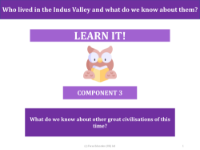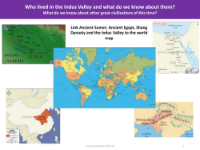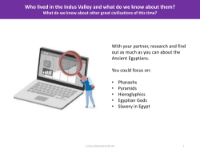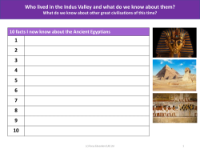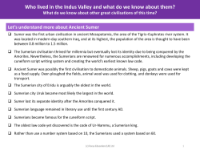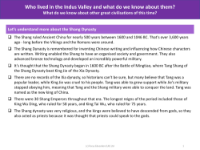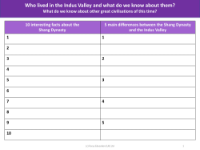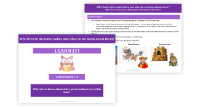Ancient Egypt: Key Knowledge - Indus Valley - Year 4
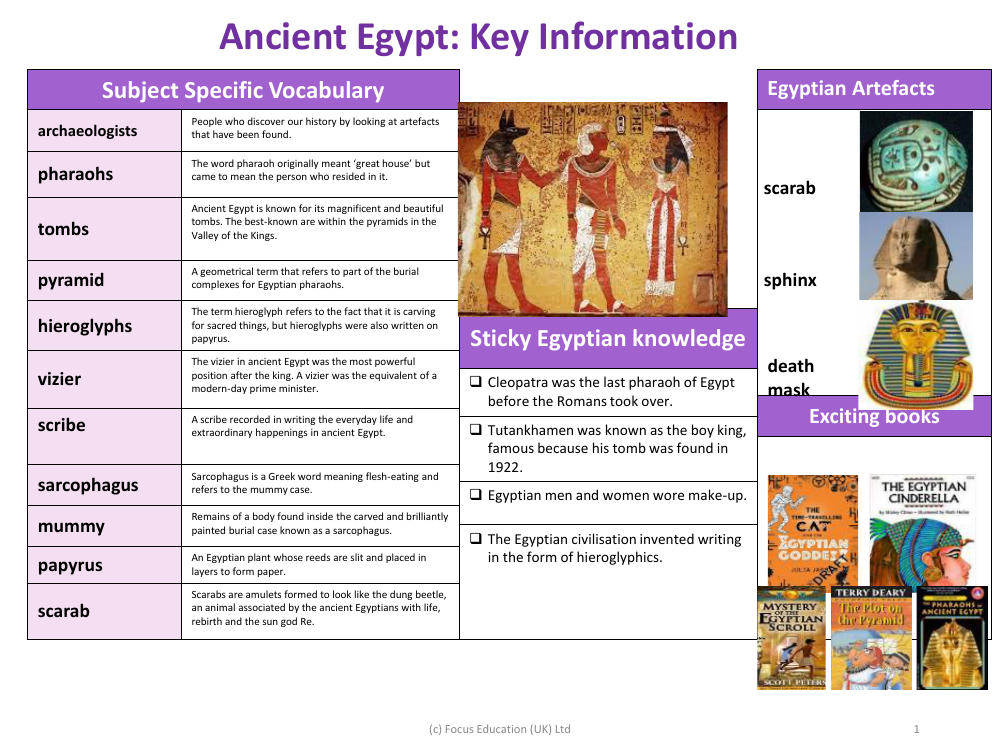
History Resource Description
In the curriculum for Year 4 students, the study of Ancient Egypt introduces them to a fascinating world of historical discovery and rich cultural heritage. The subject-specific vocabulary is an essential part of this key information, which helps students to understand and articulate the various aspects of Egyptian civilisation. Archaeologists are described as individuals who unravel our history through artefacts that have been unearthed. The term 'pharaohs' evolved from meaning 'great house' to representing the rulers who dwelled within. The lesson also delves into the grandeur of Egyptian tombs, particularly those located in the pyramids of the Valley of the Kings, which served as part of the burial complexes for the pharaohs.
Students learn about the significance of hieroglyphs, the sacred carvings that were not only etched in stone but also inscribed on papyrus, a paper-like material made from an Egyptian plant. The role of the vizier is likened to that of a modern-day prime minister, being the second most powerful person after the king. The curriculum touches upon key figures and practices from the era, such as Cleopatra, the last pharaoh before Roman conquest, and Tutankhamen, the 'boy king' whose tomb was famously discovered in 1922. Additionally, the Egyptians' use of makeup, the concept of a sarcophagus—a term of Greek origin meaning 'flesh-eating'—and the mummy it housed are explored. Scarabs, shaped like dung beetles, symbolise life and rebirth, and are connected to the sun god Re. These elements, together with the sphinx and death masks, paint a vivid picture of the ancient Egyptian way of life and their enduring legacy.
